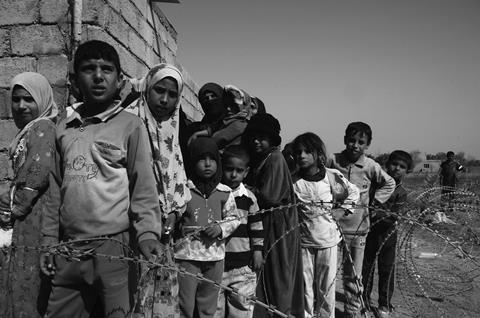Decades of wars and conflict in Iraq have led to a “catastrophic” rise in antibiotic resistance in the country, with serious implications for the entire region and the world, international experts have warned.

The combination of destroyed healthcare infrastructure, medicine shortages, limited resources, high levels of heavy metal contamination, and poor sanitation is likely to blame, they argue in BMJ Global Health.
Largely attributed to the overuse and misuse of antibiotics, attention is now turning to other factors, such as heavy metals and disinfectants containing quaternary ammonium compounds (QACs), which are widely used in the healthcare and hospitality sectors.
War has been implicated in the emergence of AMR as far back as the 1940s, but has received little attention, say the authors.
Series of conflicts
Iraq is a stellar example of this neglect, as the country has experienced a sequence of conflicts since the 1980s that have coincided with the emergence and spread of pathogens with specific patterns of antibiotic resistance, they highlight.
These conflicts include the Iran-Iraq war (1980–88); the First Gulf War in 1991; United Nations economic sanctions following the Iraqi invasion of Kuwait (1990- 2003); the US invasion and occupation (2003–11), including a period of militarised violence (2005-07); and Iraqi state conflicts with ISIS (Islamic State of Iraq and Syria) in 2014–17.
“Contemporary conflicts, waged in urban and industrialised landscapes, pressure microbes with selective environments that contain unique combinations and concentrations of toxic heavy metals and antibiotics, while simultaneously providing niches and dissemination routes for microbial pathogens,” the authors write.
“These can include the high number of wounded, the nature of wounds, refugee displacement, collapse of sanitation controls, loss of diagnostics and skilled healthcare personnel, the dismantlement of healthcare infrastructures and the placement of often under-resourced and improvised field hospitals where both injured combatants and civilians are exposed to harmful pathogens with limited care and resources to properly recover.”
Such outcomes have occurred in Iraq, say the authors.
Heavy metals
Heavy metals used in weapons persist in the environment, with explosives harbouring huge amounts of lead and mercury. Chromium, copper, lead nickel and zinc are used to coat bullets, missiles, gun barrels and military vehicles, while antimony, barium, and boron are weapon-priming compounds. And many bacterial species have been shown to have evolved resistance to combat heavy metals’ toxicity.
“Taken together, a destroyed healthcare infrastructure, inappropriate microbial therapies, limited resources, high heavy metal contamination in humans and the environment,and lack of [proper water, sanitation and hygiene], combined, likely play instrumental roles in the catastrophic rise of AMR in Iraq and, by extension, regionally and globally,” the authors write.
Research is urgently needed to understand the direct and indirect roles of armed conflict on the rise of AMR if it is to be stopped and millions of needless deaths prevented, they insist.
“Understanding these linkages between AMR and conflict, especially across time, is essential for a global response to AMR, especially as there is little indication that conflict, worldwide, will abate in years to come.”
’Antimicrobial resistance and the Iraq wars: armed conflict as an underinvestigated pathway with growing significance’ appears in BMJ Global Health.news




No comments yet